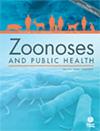Leishmaniasis is a neglected tropical infection caused by Leishmania parasite that affect human and animal. In Morocco, the cutaneous leishmaniasis has spread substantially to the new areas. The surveillance limited to active foci may underestimate the occurrence of cutaneous leishmaniasis (CL). This study aims to investigate the local transmission of CL in rural districts of Youssoufia province, central Morocco, as a potential focus of CL.
For this purpose, parasitological, molecular and entomological investigations were carried out in this area. Data collection concerns potential vectors and human cases. Thus, 402 patients were examined for suspected leishmaniasis lesions in three localities of the province of Youssoufia. In these same localities, 983 sand flies were collected by CDC light traps and sticky paper during one-night per month during 6 months. These sand flies were all identified morphologically using the Moroccan identification key.
The results showed that among the 25 skin lesions detected in a population of 402 individuals, 18 were confirmed by kDNA nested PCR as CL positive patients, of which only 25% were positive by direct examination. Leishmania tropica and Leishmania major were identified as causative agents of CL in the study area. Direct parasitological examination showed a low sensitivity (27.78%), especially for L. major, although its specificity was evaluated at 100%. Regarding entomological results, both genera of the Moroccan sand fly were collected in the study area: Genus/Phlebotomus (75.28%) and Sergentomyia (24.72%). Phlebotomus (P) papatasi, the proven vector of L. major, was the most abundant species (33.98%), followed by Paralongicollum sergenti (22.58%), the confirmed vector of L. tropica; while Sergentomyia (S) minuta, P. longicuspis, S. fallax and P. kazeruni were collected with, respectively, 17.60%, 16.99%, 7.12% and 1.73%.
This study constitutes the first report of CL in the study areas, as well as the coexistence of L. tropica and L. major in these rural localities. Local transmission of CL is highly probable, as indicated by the prevalence of the two proven vectors of L. major and L. tropica. To control the spread of this disease, our results suggest the use of highly sensitive molecular methods to detect CL cases in potential leishmaniasis foci, which will improve surveillance.


